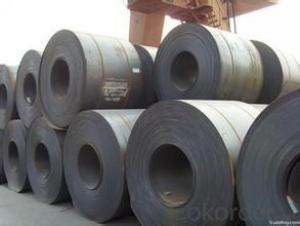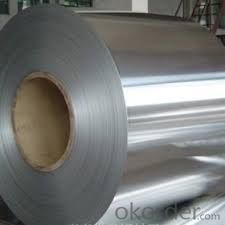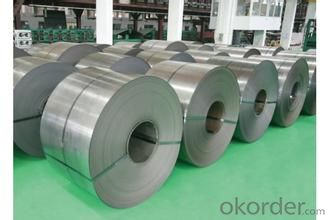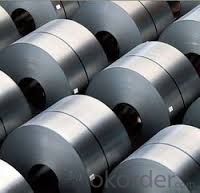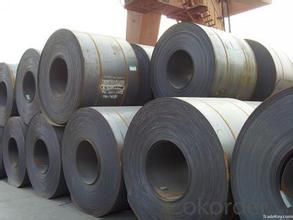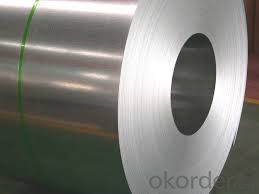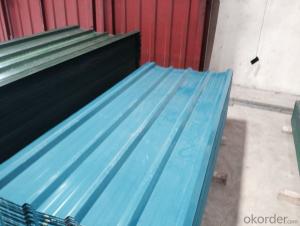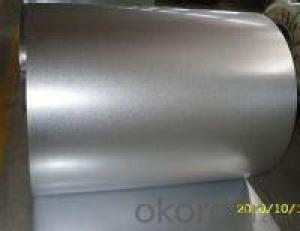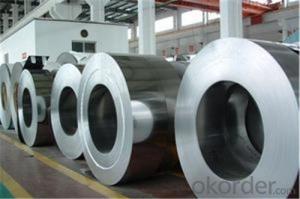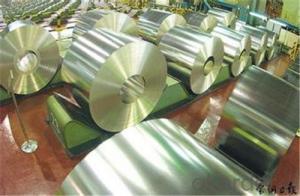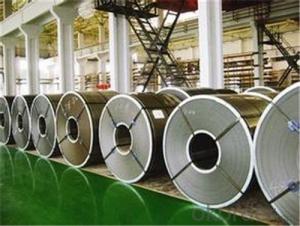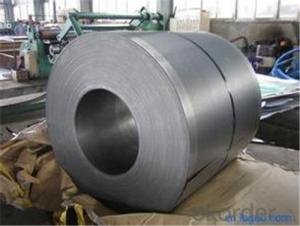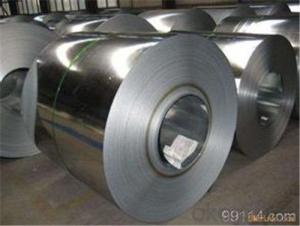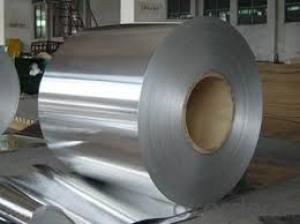Cold Relled Steel Coil/Plates with High Quality from CNBM
- Loading Port:
- Tianjin
- Payment Terms:
- TT OR LC
- Min Order Qty:
- 100 m.t.
- Supply Capability:
- 89000000 m.t./month
OKorder Service Pledge
OKorder Financial Service
You Might Also Like
Description of cold rolled steel coil :
The raw material of cold rolled steel coil/sheet is high quality hot rolled product, and after pickling, kinds of new technology and new process of global cold rolling production have been applied. Therefore the manufacturing, home appliance, automobile etc.
Specification of cold rolled steel coil :
standard | AISI, ASTM, DIN, GB, JIS |
Steel Grade | Q195/Q195L/st12/dc01/spcc |
Thickness | 0.15-1.5mm |
Width | 500-914mm |
Length | coil |
Place of Origin | Shandong,china(mainland) |
Producing ablity | 500,000 Tons/month |
Type of payment | T/T, L/C |
Packing | As per customer's requirement |
Delivery | 30days after contract |
Price | FOB&CIF |
MOQ | 20Tons |
Packaging & delivery of cold rolled steel coil :
Packaging Detail: | Oil coated, metal shell and anti-rust paper with corner protected by sheet or coil |
Delivery Detail: | 30 days after receiving deposit or L/C |
Application of cold rolled steel coil :
1. Refrigerators, cabinets, power distribution baords and drums.
2. Automobile floor and roof panels.
3. Automobile fenders and quarter panels
4. Automobile fenders and quarter panels
Images of cold rolled steel cold rolled steel coil:
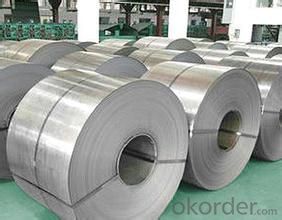
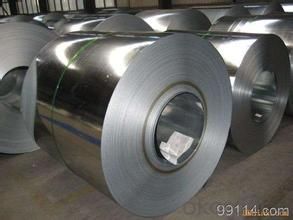
- Q: I want a good quality, big, strong, steel knife but I want it to be a good price, say around $30 or less, $60 at the most. please add links.
- DAGS for combat knife
- Q: What are the quality standards for steel coil manufacturing?
- The quality standards for steel coil manufacturing typically include criteria such as dimensional accuracy, surface finish, mechanical properties, chemical composition, and adherence to industry-specific standards like ASTM or EN. These standards ensure that the steel coils meet the required specifications for various applications and provide reliable performance in terms of strength, durability, and consistency. Additionally, manufacturers often follow strict quality control processes throughout the production cycle to ensure the quality of the final product.
- Q: How are steel coils affected by global trade policies?
- Steel coils are significantly affected by global trade policies as they are subject to various tariffs, quotas, and trade restrictions imposed by different countries. These policies can impact the cost, availability, and competitiveness of steel coils in the international market. Changes in trade policies can lead to fluctuations in demand and supply, impacting the prices and trade volumes of steel coils.
- Q: What is the difference between galvanized and galvalume steel coils?
- Both galvanized and galvalume steel coils have undergone a coating process to enhance their durability and resistance to corrosion. However, there are distinct differences between the two. Galvanized steel coils have a layer of zinc coating, which provides excellent corrosion resistance and protects the underlying steel from rust and other forms of deterioration. The zinc coating also acts as a barrier against moisture and prevents direct contact between the steel and the elements. Galvanized steel coils are commonly used in construction, automotive manufacturing, and agricultural equipment, where corrosion resistance is crucial. On the other hand, galvalume steel coils are coated with a combination of zinc and aluminum. This unique coating composition offers enhanced corrosion resistance compared to galvanized steel coils. The aluminum in the coating acts as a sacrificial anode, providing additional protection to the steel by sacrificially corroding instead. This sacrificial protection mechanism helps the underlying steel remain intact and prevents the spread of corrosion even if the coating is damaged. Galvalume steel coils are often used in environments with extreme weather conditions and high humidity, making them suitable for roofing, siding, and other outdoor applications. To summarize, the main difference between galvanized and galvalume steel coils lies in the composition of their coatings. Galvanized steel has a zinc coating, while galvalume steel has a combination of zinc and aluminum. Galvalume steel offers superior corrosion resistance due to the sacrificial protection provided by the aluminum in the coating. The choice between the two depends on the specific application and the level of corrosion resistance required.
- Q: Has anyone painted their appliences with stainless steel paint? I found on the internet what is called Thomas Liquid stainless steel paint. If you have used it for your kitchen appliences or cabinets, how were the results? How hard was it to apply? Would you recommend it?
- I have never heard of stainless steel paint, but I know that stainless steel is hard to clean and maintain
- Q: How do steel coil manufacturers handle customer complaints?
- Customer complaints in the steel coil manufacturing industry are addressed and resolved through a structured process. The manufacturer begins by carefully listening to and understanding the nature of the complaint. This involves actively engaging with the customer to gather all relevant information and ensure clear communication. Upon full comprehension of the complaint, the manufacturer promptly investigates the situation. This may involve reviewing production records, analyzing quality control measures, or conducting internal inspections. The goal is to identify the root cause of the problem and determine any contributing factors. Once the investigation is complete, the manufacturer provides a timely response to the customer. This response includes an explanation of the findings, an acknowledgement of the customer's concerns, and a proposed solution or resolution. The proposed solution may involve replacing defective coils, offering compensation, or providing expert advice to mitigate the issue. To prevent future complaints, the manufacturer takes steps to rectify any internal shortcomings. This could involve revisiting quality control procedures, improving communication among departments, or implementing additional employee training. Furthermore, maintaining open and transparent communication with customers throughout the complaint handling process is essential. Regular updates on the investigation's progress are provided, and any further concerns or questions from the customer are promptly addressed. In summary, prioritizing customer satisfaction and ensuring a fair and efficient resolution are crucial in handling customer complaints in the steel coil manufacturing industry. By following a structured approach, actively listening, and taking appropriate corrective actions, manufacturers can effectively address customer complaints and maintain positive client relationships.
- Q: Alright...Please tell me what I can and can't buy for Steel Legion in detail(Much Detail please)Ogryns.Las canons.The problem I'm having is that they don't have steel Legion Uniform..does it matter?1.I also heard that you can't use Commisar Yarrick.(So what could I use?)2.What are my Hq choices,Fast attack,Heavy Support,Elite etc.3.Steel Legion has a Commisar....(Do I buy one for each squad of Steel Legion or one?)Please in detail what should I buy...I don't have the codex yet but will soon!!4.I also heard that if I get Steel Legion I need a transport for everything?(Is this true?)5.Please be detail on what i can't and can buy!!(Please like HQ Squad leader,Sargent)
- here are a couple of things about the steel legion. you should have a lot of mechanized units, have chimaras for rvery squad if posible, artillery fire helps a hell of a lot. also sentinals and leman russes and hell hounds also help. if in apocolypse, use banblades and titans. storm trooper squads should be your base squadrons. put them in chimeras and get near the action, drop 'em off and rapid fire like CRAZY!!! the steel legion loves heavy weapons so remember to get some heavy weapons platforms. there favourite weapons are grenade and missle launchers. there is also an officer you can buy with a power sword with the steel legion look. steel legion are big xeno hunters. because commisar is a ork killer you should be allowed to field him. ratling/ sniper squads also help and if you can get a vindicare assassin that is very useful.
- Q: So...that means Wolverine can stab him, right? Because Adamantite is stronger than steel. Correct?
- Faster than a Speeding bullet too!! They are just expressions/nicknames. Obviously he's faster than a speeding bullet, he can run from Kansas to Mexico and back and you wouldn't even know it. If you want it literally, just call him Superman, or extremely tough and fast man.
- Q: What's the best way to clean granite countertops and stainless steel appliances? My countertops especially always look dull and streaky. Thanks!!!!!!!
- The best home remedy for that is shaving cream. Use men's shaving cream, not the gel, and not the ones with aloe, but regular shaving cream. It'll get the crud off and it'll shine it up for you. Just make sure you wipe it down really well, so there aren't any streaks.
- Q: I personally don't believe the story of 8 guys who flew small planes can navigate passenger jets into buildings hundreds of miles away with that precision. It just doesn't make sense.I am wondering what the story surrounding the molten steel was, how could molten steel have been produced when fuel from the planes wasn't hot enough (it melts at 2850 degrees)?
- that's just it: there wasn't very much molten steel for the very reason you point out. Jet fuel burns at 800° to 1500°F. This is not hot enough to melt structural steel. However, engineers say that for the World Trade Center towers to collapse, their steel frames didn't need to melt, they just had to lose some of their structural strength. Steel will lose about half its strength at 1,200 degrees F. The steel will also become distorted when heat is not a uniform temperature. after the collapse, a LOT of folks took a look at the remains. the result was the conclusion that the fire caused the central core of the building to weaken. When the floors collapsed one on top of the other, the weight was too much for the weaked core to bear, causing the result we are all familiar with. hope this helps
Send your message to us
Cold Relled Steel Coil/Plates with High Quality from CNBM
- Loading Port:
- Tianjin
- Payment Terms:
- TT OR LC
- Min Order Qty:
- 100 m.t.
- Supply Capability:
- 89000000 m.t./month
OKorder Service Pledge
OKorder Financial Service
Similar products
Hot products
Hot Searches
Related keywords



